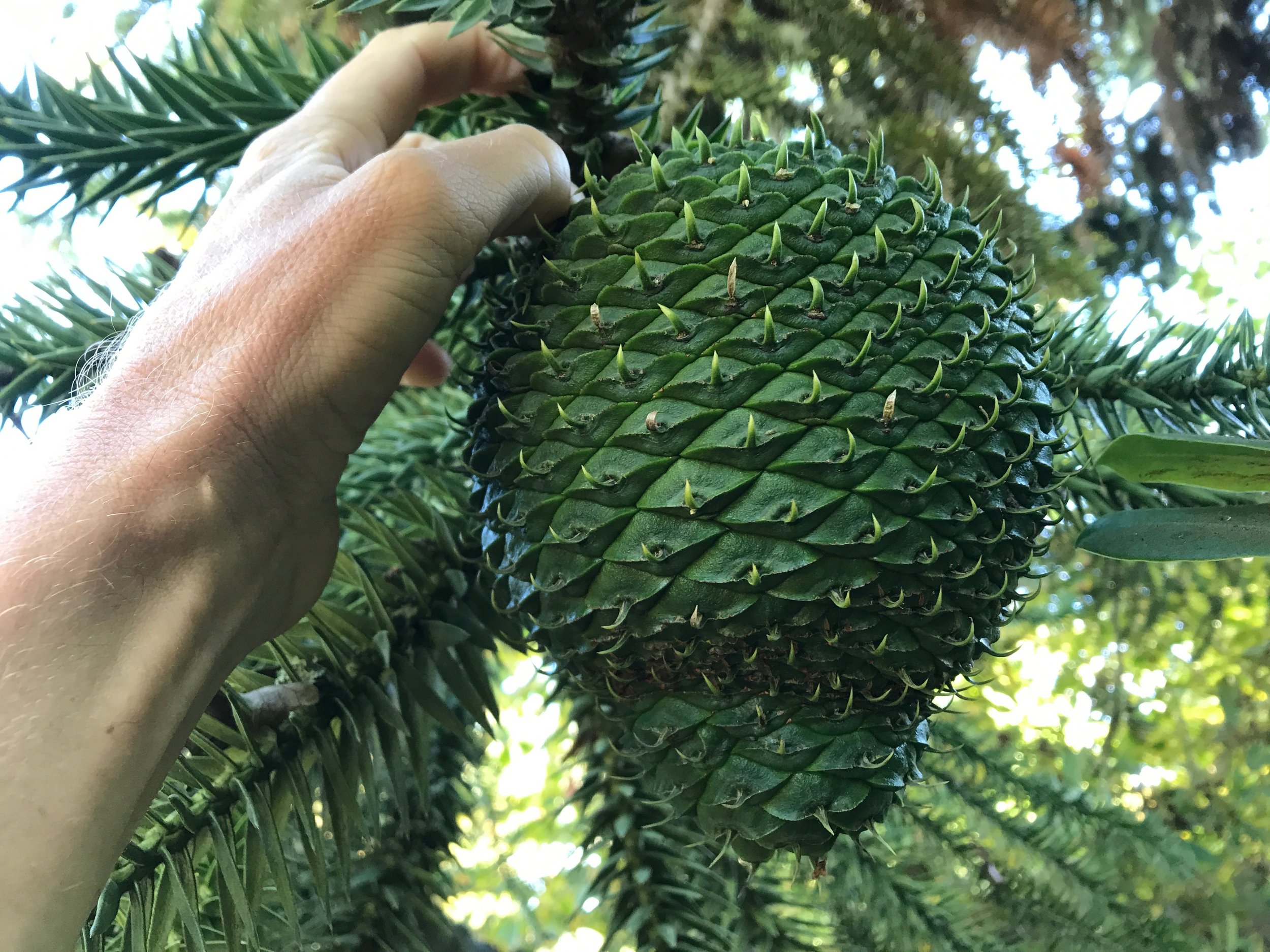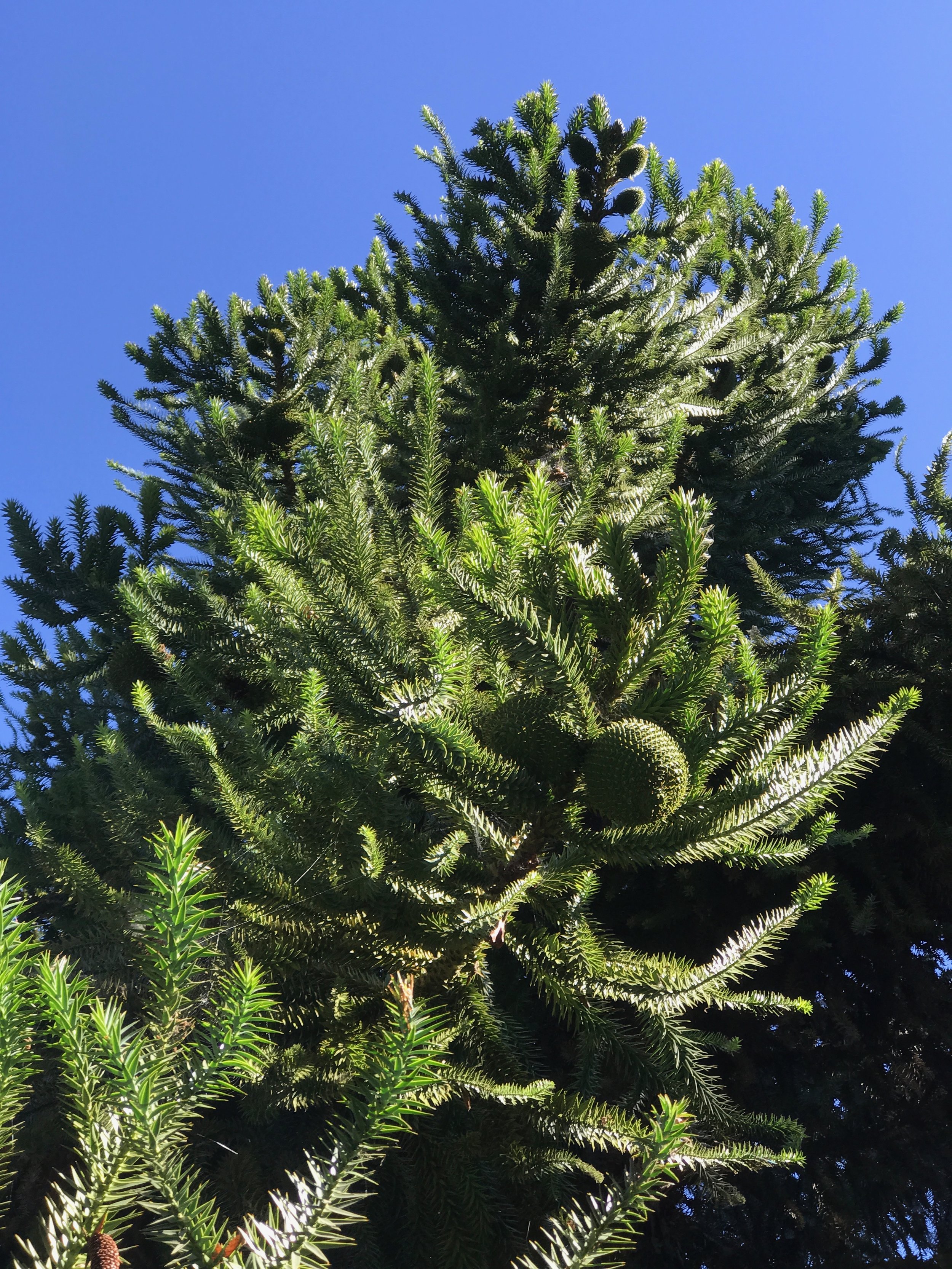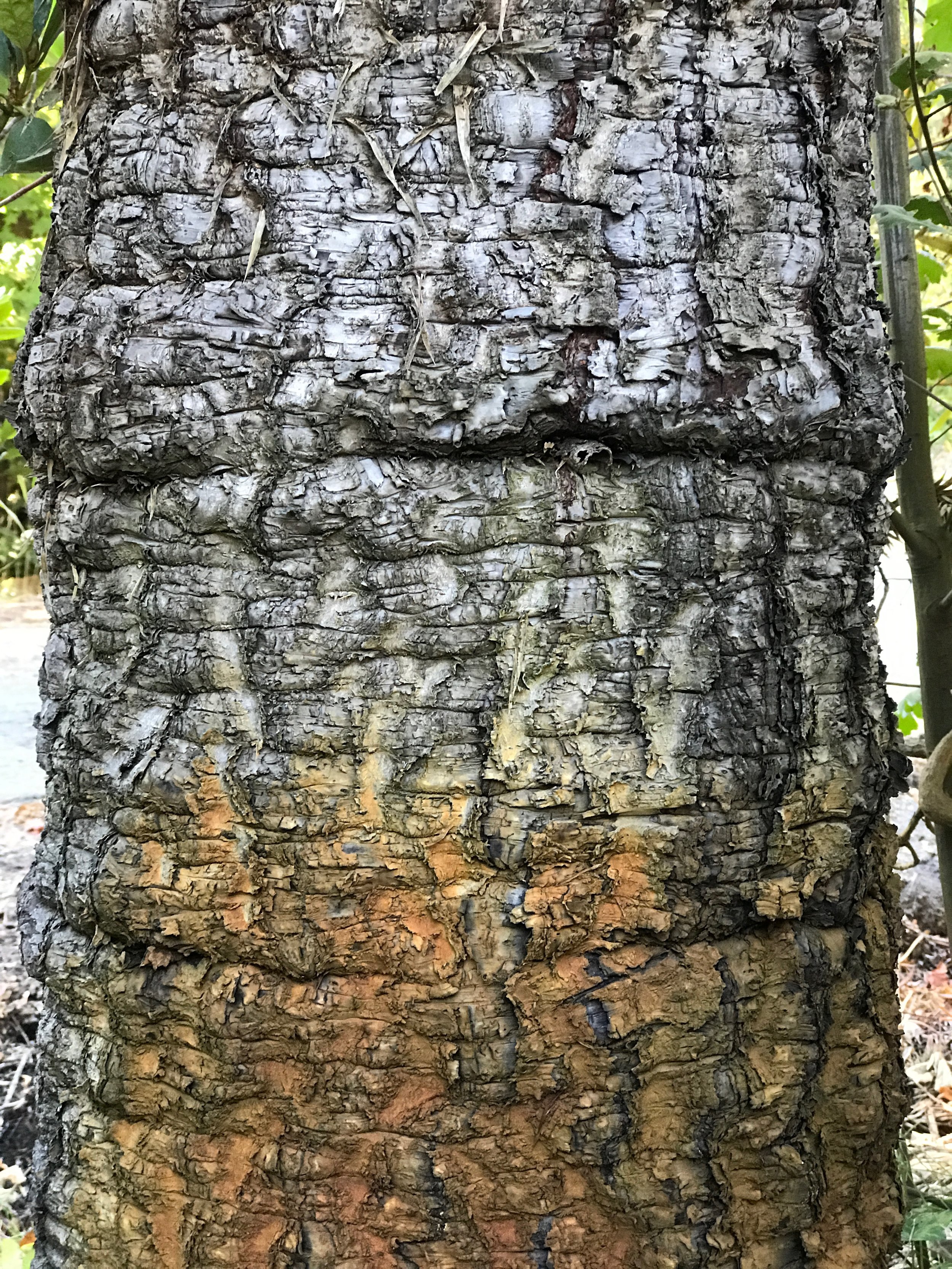Randia formosa - blackberry jam fruit
Randia formosa is a memeber of the Rubiaceae family, native to Brazil. Is a small tree related to gardenia and coffee and Psychotria spp, among others. The tree / shrub has a has fragrant, white flowers similar in aroma to the gardenia. The tree doesn't get much taller than eight feet. The fruit is a yellow capsule with an almost brittle shell, similar in shape, although smaller in size, to the pomegranate (Punica granatum). Upon breaking open the capsule, one will find dark, jam-like pulp embedded with numerous seeds. The pulp has a taste similar to that of blackberry jam, or some other jam, thus the name.
Eugenia uniflora - Suriname Cherry
BACKGROUND, ORIGIN AND DISTRIBUTION
Suriname Cherry originates in Brazil from Bahia to the south; along with jaboticaba, it is one of the most common fruits in the country.
In humid tropical climates the tree can surpass 7 m in height. In subtropical regions it typically doesn’t get much taller then 2-4 m.
The foliage is very decorative, bright green with various hues of red in new leaf growth.
USES AND ETHNOBOTANY
The fruit has many uses, but is typically eaten raw. There exist red and purple varieties, which can be either sweet or acidic. It is considered to be one of the best Myrtaceae fruits. The tree bears abundantly, its fruits typically used in preserves, ice creams, syrups, wines and liquors.
The leaves of the tree emit a pleasant aroma when crushed, the smell is employed as a deterrent for flies and mosquitoes. To this end, it is Brazilian custom to scatter crushed leaves on the floors of ones home. The flowers attract honeybees, considered to be a desirable species for apiculture.
The fruit contains 6% sugar, 1% protein and is very acidic, and rich in vitamin C, 25 – 43 mg per 100 g.
PROPAGATION AND CULTIVATION
Suriname Cherry can be propagated easily from fresh seed. Seed does not have very long viability. The small trees are adapted to the humid tropics and subtropics, from sea level up to 1,700 meters altitude, but they thrive in lower elevation, hot, humid tropical climates. In dryer regions the tree benefits from irrigation, which enables it to produce more abundantly. The tree can adapt to all kinds of soils, from sandy to clay.
Anacardium occidentale - Cashew
OVERVIEW, ORIGIN AND DISTRIBUTION
The cashew tree (Anacardium occidentale) is a tropical evergreen tree that produces the cashew seed and the cashew apple. It can grow as high as 14 m (46 ft), but the dwarf cashew, growing up to 6 m (20 ft), has proved more profitable, with earlier maturity and higher yields.
The species is originally native to northeastern Brazil. Portuguese colonists in Brazil began exporting cashew nuts as early as the 1550s. Major production of cashews occurs in Vietnam, Nigeria, India, and Ivory Coast.
The cashew nut, often simply called a cashew, is widely consumed. It is eaten on its own, used in recipes, or processed into cashew cheese or cashew butter. The shell of the cashew seed yields derivatives that can be used in many applications including lubricants, waterproofing, paints, and arms production, starting in World War II. The cashew apple is a light reddish to yellow fruit, whose pulp can be processed into a sweet, astringent fruit drink or distilled into liquor.
Commercial growers in the 21st century cultivate cashews in warm, humid climates across the globe, with Vietnam, Nigeria, India, Brazil and Indonesia among the top producers of 23 cashew countries. Cashews are harvested by hand.
USES AND ETHNOBOTANY
Both the apple and the nut can be eaten. The apple is sweet, juicy and highly perishable. The quality and edibility of the apple varies from variety to variety. Although the apple can be eaten out of hand, it has a somewhat astringent quality and is best utilized in juice, wine, or preserves.
TOXICITY
Parts of the nut are highly toxic when raw and are typically treated with heat, either boiling or baking, before used for human consumption. The nut in itself is not toxic, but the double shell surrounding the nut contains a dermatogenic phenolic resin, urushiol, a powerful irritant also found in poison ivy, another member of the Anacardiaceae clan. A few word of advice: don’t try to shell the raw seed with your teeth. One should take the cautionary measure to process cashews (especially if baking) in a well ventilated area as it could prove hazardous to to breath accumulating fumes associated with baking the seeds.
PROPAGATION AND CULTIVATION
The Cashew is a relatively fast growing tree, suitable for pioneer and erosion control planting. Although the tree can reach heights of forty feet, they can begin fruiting at fifteen feet, within a few years of seed germination. Closely related to Mangifera sp., Cashew thrives in similar climates. Although it grows fast and has fairly prolific in fruit production in the humid tropic, it produces much more in a region with a marked dry season.
Cashew grows easily from seed. Seed can be washed, air dried and stored for up to a year, maybe more. It is beneficial to avoid transplanting the Cashew as it has a delicate taproot which can be easily upset. Best results are achieved by planting the seed directly in the ground, ideally above a large pit backfilled with organic compost.
When ripe, the seed (or nut) appears at the end of an engorged stalk, shaped like a pear, which is referred to as the Cashew Apple, or Maranoncriollo. The stalk swells fairly rapidly, in hot weather, when the cashew nut reaches maturity.
The cashew is very tolerant of poor soils and fairly resistant to wind and salt spray, thus is an excellent species to be cultivated in coastal areas. Due to its soil adaptability, shallow root system, fast growth rate, and useful fruit and nut production, the Cahsew is an good candidate as a pioneer species for agroforestry systems, interplanted at high densities with nitrogen fixing trees, especially in situation where erosion control and soil improvement is needed.When established the tree proves to be very drought tolerant, which can be trimmed as needed to accommodate for longer lived, superior tree crops.
Psidium Cattleianum - Strawberry Guava
Native to Brazil, Cattley Guava was brought to China by the Portuguese. From China it was introduced into Europe where it is known as Strawberry Guava, it can also be found cultivated in the Mediterranean, Hawaii, Florida, California, Mexico and throughout Central America. P. cattleianum is a very attractive shrub, however it can grow up to eight m in height. The leaves are dark brown and somewhat glossy, the bark is shiny and peeling. The fruit are 3-4 cm in diameter, considered by many to be the best species of guava. There are red and yellow varieties.
The Strawberry guava is rich in vitamin C and contains 4.5% sugar, 6% fiber and 1.1% protein.
Eugenia uniflora - Suriname Cherry
Suriname Cherry originates in Brazil from Bahia to the south; along with jaboticaba, it is one of the most common fruits in the country.
In humid tropical climates the tree can surpass 7 m in height. In subtropical regions it typically doesn’t get much taller then 2-4 m.
The foliage is very decorative, bright green with various hues of red in new leaf growth.
The fruit has many uses, but is typically eaten raw. There exist red and purple varieties, which can be either sweet or acidic. It is considered to be one of the best Myrtaceae fruits. The tree bears abundantly, its fruits typically used in preserves, ice creams, syrups, wines and liquors.
The leaves of the tree emit a pleasant aroma when crushed, the smell is employed as a deterrent for flies and mosquitoes. To this end, it is Brazilian custom to scatter crushed leaves on the floors of ones home. The flowers attract honeybees, considered to be a desirable species for apiculture.
The fruit contains 6% sugar, 1% protein and is very acidic, and rich in vitamin C, 25 – 43 mg per 100 g.
Trees are adapted to the humid tropics and subtropics, from sea level up to 1,700 meters altitude, but they thrive in lower elevation, hot, humid tropical climates. In dryer regions the tree benefits from irrigation, which enables it to produce more abundantly. The tree can adapt to all kinds of soils, from sandy to clay.









